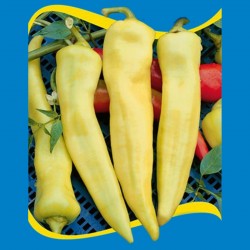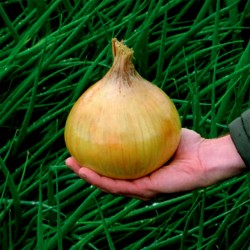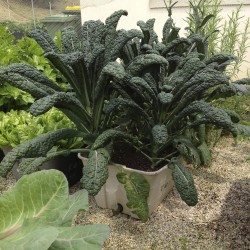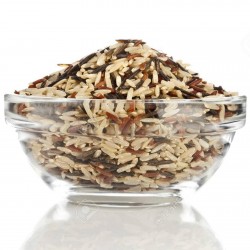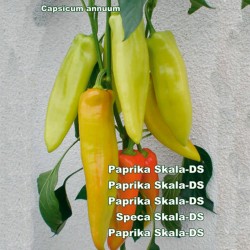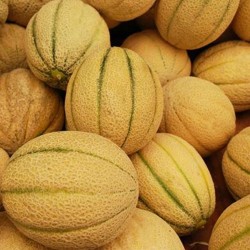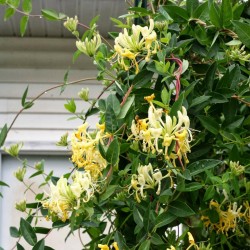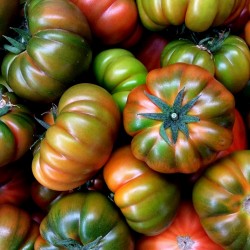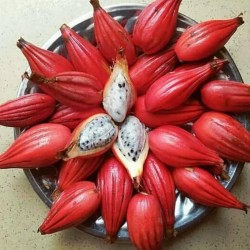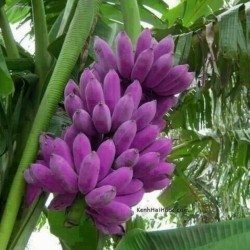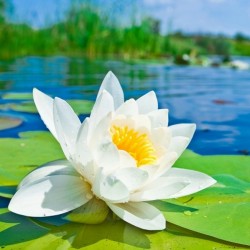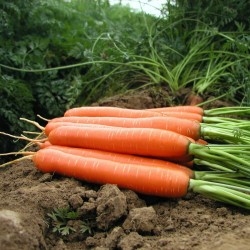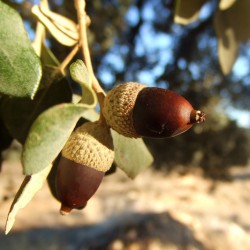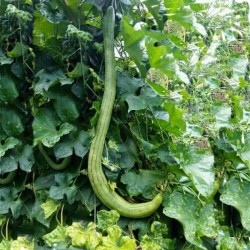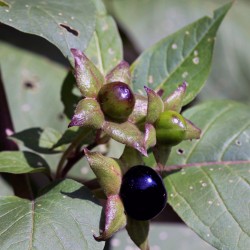
Wolfskers zaden (Atropa...
Prijs
€ 3,75
(SKU: MHS 58)
Seeds Gallery EU,
5/
5
<!DOCTYPE html>
<html>
<head>
<meta http-equiv="Content-Type" content="text/html; charset=UTF-8" />
</head>
<body>
<h2><strong>Wolfskers zaden (Atropa belladonna)</strong></h2>
<h2><span style="color: #ff0000;"><strong>Prijs voor pakket met 5 zaden.</strong></span></h2>
<p>Atropa Belladonna, of <span style="color: #000000;"><strong>duivelskers</strong></span>, wordt al meer dan twee millennia gebruikt als medicijn, cosmetica, gif en heksenplant. Belladonna is een meerjarige, gezaaide, vertakte plant die tot 1,5 meter hoog kan worden, met bladeren van 12-13 cm lang en een paarse stengel. Het sterft in de winter en loopt weer uit in het voorjaar.</p>
<p>Eeuwenlang hebben heksen het gebruikt in formules, Venetiaanse vrouwen in het algemeen, en in het bijzonder "nachtdames" voor het verwijden van de ogen, en het wordt momenteel gebruikt als remedie tegen reisziekte, IBS en andere darmaandoeningen. Belladonna werd ook gebruikt om hele legers te vergiftigen in de oorlog. Er wordt gezegd dat Satan persoonlijk voor deze plant en zijn kleine "duivelskersen" zorgde.</p>
<p>Bevat psychotrope / giftige / levensreddende alkaloïden, waaronder atropine. Deze plant is een medicijn, een hallucinogeen en een gif. De dood kan (en gebeurt) door slecht geïnformeerde mensen, bijvoorbeeld door te veel rijpe bessen in taarten te eten, dus doe dat niet. De bessen zijn heerlijk (ik heb ze zelf opgegeten en ze zijn best lekker). Dit is een plant die het hoofdbestanddeel is van de geheime formule-drank "Flying Formula" die heksen al eeuwenlang gebruiken.</p>
<p>Dit kruid kan je echt het gevoel geven dat je ziel op reis is, maar te veel consumeren kan fataal zijn. Het kan ook worden gebruikt als tegengif voor gasvergiftiging.</p>
<h3><strong>Cultuur</strong></h3>
<p>Het kan worden vermeerderd door zaden of stekken te zaaien, hoewel het gebruik van zaden meer wordt aanbevolen. De zaden moeten een paar uur voor het zaaien in heet water worden gezet. Ze hebben tijd nodig om te ontkiemen en ze hebben een hoge luchtvochtigheid en warmte nodig, en met behoud van alle noodzakelijke omstandigheden is de ontkieming niet geweldig. Planten zullen het compostsubstraat met mest en een vochtige, schaduwrijke omgeving waarderen. Nitraten en ammoniakzouten zijn de beste meststof om de hoeveelheid alkaloïden te verdubbelen.</p>
<h3><strong>WIKIPEDIA:</strong></h3>
<p><b>Wolfskers</b><span> </span>(<i>Atropa belladonna</i>) (ook:<span> </span><b>belladonna</b><span> </span>of<span> </span><b>slaapbes</b><sup id="cite_ref-1" class="reference">[1]</sup>) is een<span> </span>vaste plant<span> </span>uit de<span> </span>nachtschadefamilie<span> </span>(<i>Solanaceae</i>). De plant is zeer<span> </span>giftig.</p>
<p>Wolfskers komt van nature voor in<span> </span>Europa,<span> </span>Noord-Afrika<span> </span>en<span> </span>West-Azië<span> </span>en is van daaruit verspreid over de hele wereld. In Nederland is de soort zeldzaam en voornamelijk in<span> </span>Zuid-Limburg<span> </span>en<span> </span>Gelderland<span> </span>te vinden, maar hij komt ook voor in parken in de rest van Nederland. Deze plant is in Nederland<span> </span>wettelijk beschermd<span> </span>sinds 1 januari 2017 door de Wet Natuurbescherming. In België is de soort zeldzaam in de<span> </span>Ardennen<span> </span>en nog zeldzamer elders. De standplaats is op beschaduwde plekken, vooral aan de rand van het bos.</p>
<h2><span class="mw-headline" id="Werkzame_stoffen">Werkzame stoffen</span></h2>
<p>De hele plant bevat giftige<span> </span>alkaloïden. Bijzonder gevaarlijk zijn de<span> </span>bessen, die de uiterst giftige stof<span> </span>atropine<span> </span>bevatten. Het eten van drie bessen kan dodelijk zijn voor een kind. Voor een volwassene zijn tien tot twaalf bessen vaak fataal. De plant kan tot 1 m hoog worden. Ook de bladeren en wortels zijn zeer rijk aan deze alkaloïden.</p>
<p>Verder bevat de plant<span> </span>hyoscyamine,<span> </span>scopolamine,<span> </span>pyridine<span> </span>en<span> </span>choline.<sup id="cite_ref-Furlenmeier_2-0" class="reference"></sup></p>
<h2><span class="mw-headline" id="Gebruik">Gebruik</span></h2>
<p>De soortaanduiding<span> </span><i>bella-donna</i><span> </span>is Italiaans en betekent 'mooie vrouw'. Vrouwen druppelden tijdens de<span> </span>Renaissance<span> </span>namelijk het atropine bevattende sap uit de plant in hun ogen om de<span> </span>pupillen<span> </span>te verwijden en ze donkerder en glanzender te maken. Dat ze daardoor ook slechter zagen werd voor lief genomen. Ook tegenwoordig gebruiken<span> </span>oogartsen<span> </span>de pupilverwijdende eigenschap van atropine nog steeds bij oogonderzoek. De hoeveelheid atropine die ze gebruiken is wel miniem.</p>
<p>De<span> </span>botanische naam<span> </span><i>Atropa</i><span> </span>is afgeleid van<span> </span>Atropos, de naam van een van de drie<span> </span>schikgodinnen<span> </span>uit de<span> </span>Griekse mythologie. Het Oudgriekse woord 'atropos' betekent 'onafwendbaar'. Al in de oudheid werd de plant gebruikt. In de 19e eeuw werden extracten van de wolfskers gebruikt voor de behandeling van<span> </span>geelzucht,<span> </span>roodvonk,<span> </span>kinkhoest,<span> </span>zenuwziektes<span> </span>en<span> </span>epilepsie.</p>
<p>In de<span> </span>middeleeuwen<span> </span>werd de plant gebruikt in<span> </span>levenselixers<span> </span>en beschouwd als<span> </span>heksenkruid<span> </span>waarvan heksen<span> </span>heksenzalf<span> </span>maakten. Bij matig inwendig gebruik kunnen er<span> </span>waanvoorstellingen<span> </span>en<span> </span>roestoestanden<span> </span>optreden.</p>
<p></p>
</body>
</html>
MHS 58 (5 S)







